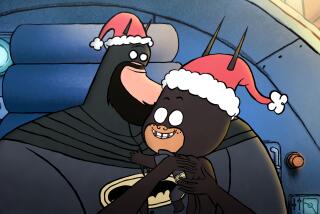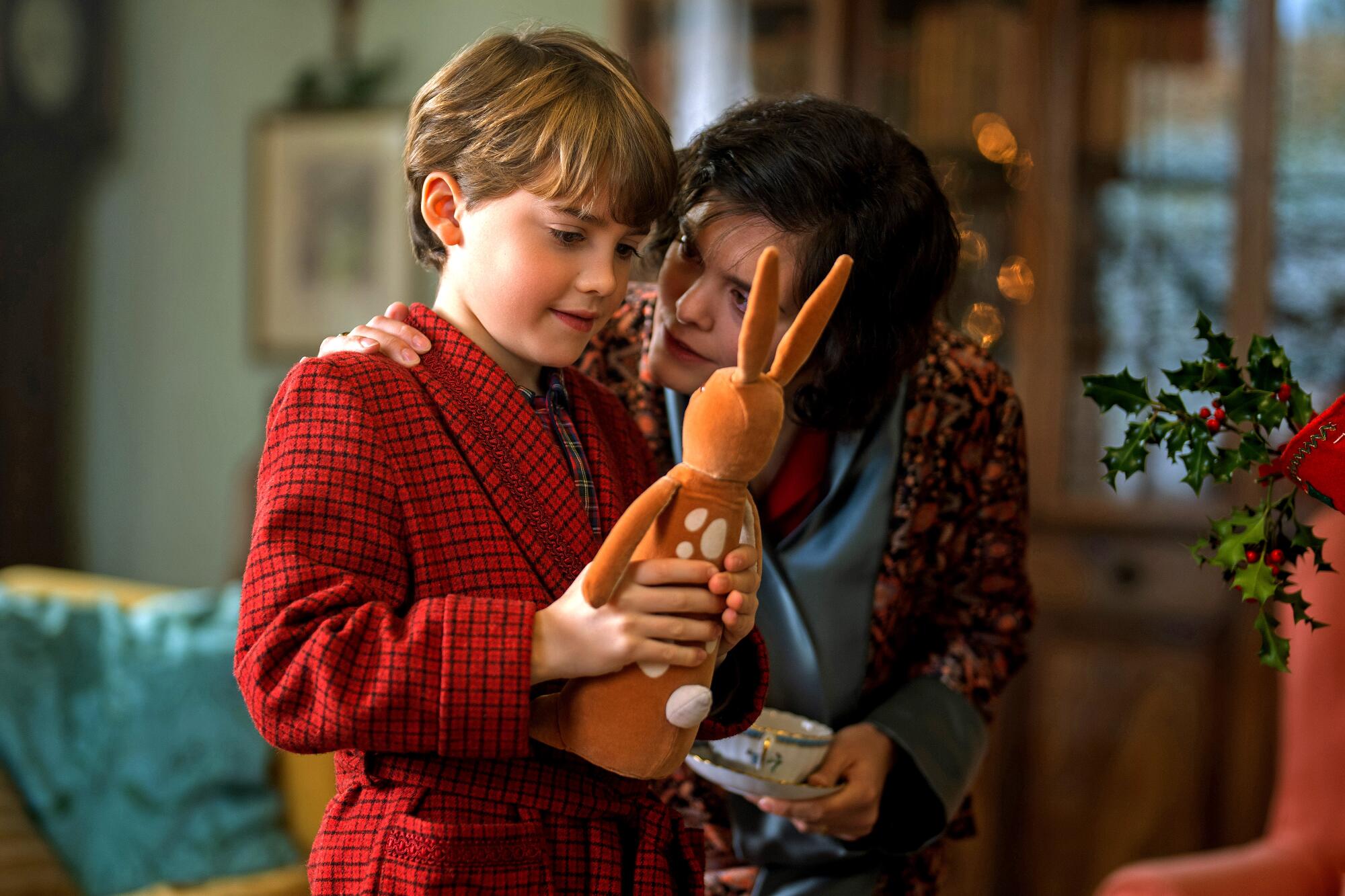
- Share via
The Velveteen Rabbit,” the children’s book by Margery Williams, was first published in 1922, and in the more than 100 years since, the story about a young boy who loves his toy rabbit so much that the stuffed animal becomes real has endured and is now considered a timeless classic.
Well-loved and well-read copies of the book populate in countless children’s bedrooms. You will find it in bookstores, preschools and libraries. Adults still get a little teary when recalling the story’s poignant and beautiful ending as the boy watches his beloved rabbit, who has become real, play with other bunnies in the woods.
This story will come to life in a new way when “The Velveteen Rabbit” premieres Wednesday on Apple TV+. Screenwriter Tom Bidwell (“My Mad Fat Diary”) and executive producer Martin Pope (“The Gruffalo”) joined forces to bring the beloved tale to a new generation of young viewers. Staying faithful to the book’s gentle tone and lovely story arc was of paramount importance.

‘Tis the season for much more than gift exchanges, cocktail parties and cozy sweaters: The holidays bring with them a bumper crop of films and TV shows, and The Times is here as your guide. Through Sunday, we’re covering the key titles to watch this season, from late-breaking Oscar contenders and acclaimed TV dramas to holiday classics old and new. Hot cocoa sold separately.
“Your memories of a book and your emotional response to a book, you almost save it like a hard drive in your system,” Bidwell says. “You need to make TV that feels modern no matter what period it’s set in. You also want to make sure you are being truthful to the book. This book has a huge emotional heart, which is something I always look for.”
The story, therefore, remains set in the 1920s. Seven-year-old William (Phoenix Laroche) receives the Velveteen Rabbit on Christmas Day. The pair become inseparable, and the Velveteen Rabbit’s wear and tear begin to show as his stuffing falls out and his velvet coating becomes spotty. When William gets scarlet fever, the Velveteen Rabbit is banished and William fears he will never see his friend again.
“It’s about the child’s experience and what did he feel,” says Pope — whose Magic Light Pictures produced the 40-minute special — about keeping the time period unchanged. “A young child’s experience is always going to be the same.”
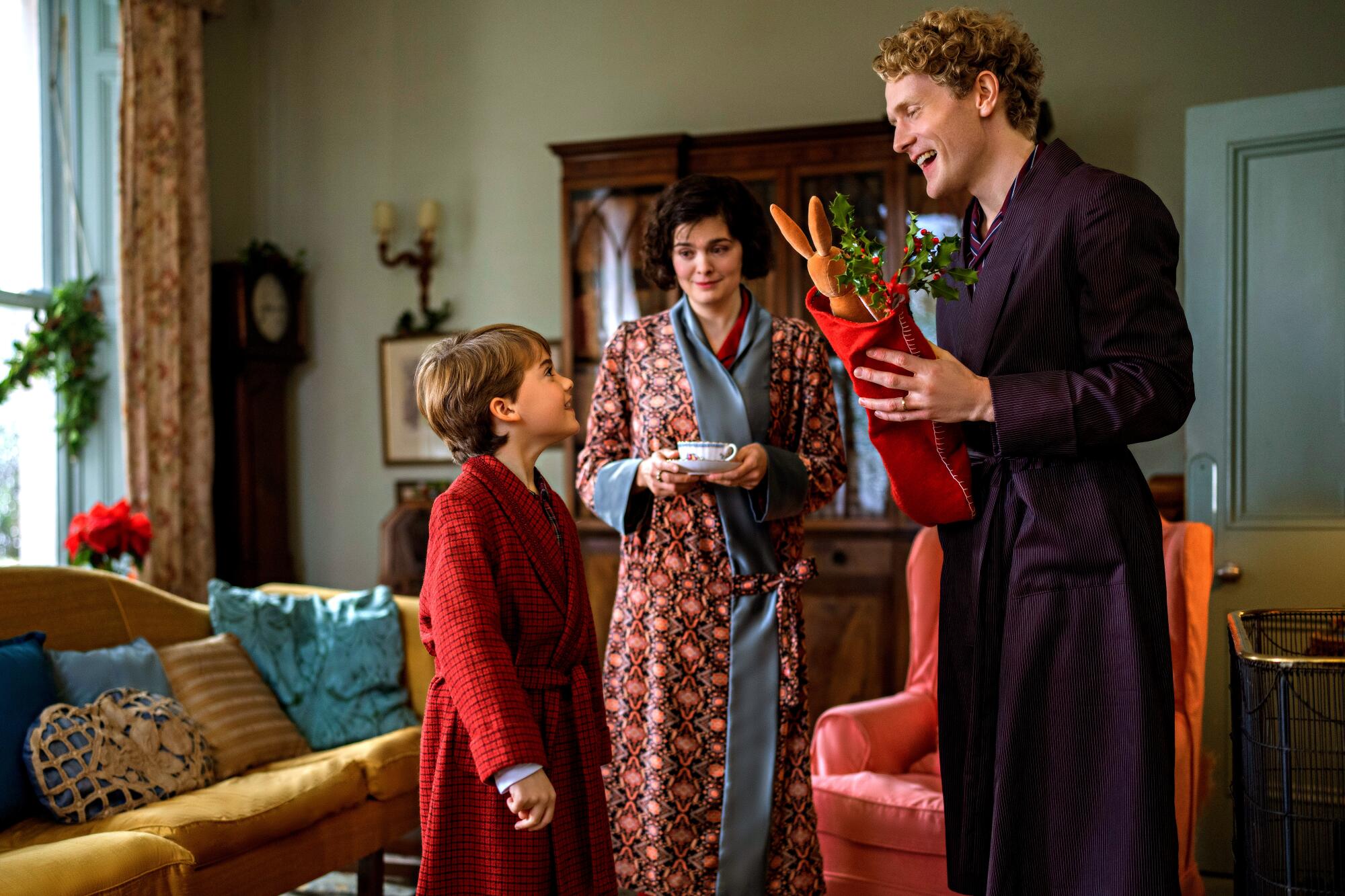
The book, which has sold more than a million copies in the U.S., doesn’t have a lot of dialogue or structural framework.
“No criticisms of a literary classic, but it’s a very emotional book,” Bidwell says. “It’s not very story-led. There’s not too much narrative in it. I wanted to make sure that this had a structure. That as soon as you started watching it, you knew you were going to go on a journey with this boy.”
In this version, William and his family move to the country and a timid William, unsure of how to make new friends, starts at a new school. The Velveteen Rabbit, meanwhile, endeavors to make friends with the inhabitants of William’s playroom, including the kind Wise Horse (voiced by Helena Bonham Carter), the bossy toy Car (Lois Chimimba) and the cranky King (Paterson Joseph).
“We wanted there to be levity in the story as well,” Bidwell says of the playroom toys. “And to reflect the different sides of being a kid, because those toys are kids as well. They have the grandioseness that kids have and they are naive. They are figuring it out just like William is.”
The look of the Velveteen Rabbit and his surroundings takes inspiration from the original book illustrations by William Nicholson. When Bonham Carter and Pope were working together on “The Gruffalo,” the Academy Award-nominated actor, who has been lifelong friends with the Nicholson family, told Pope he should look at “The Velveteen Rabbit” as a possible project.
Pope said he and a few members of his production team spent an afternoon with Nicholson’s grandson, Desmond Banks, looking at the book’s original illustrations. “They are all there and they are absolutely gorgeous,” Pope says. “To not take inspiration from that would seem a bit silly really.”
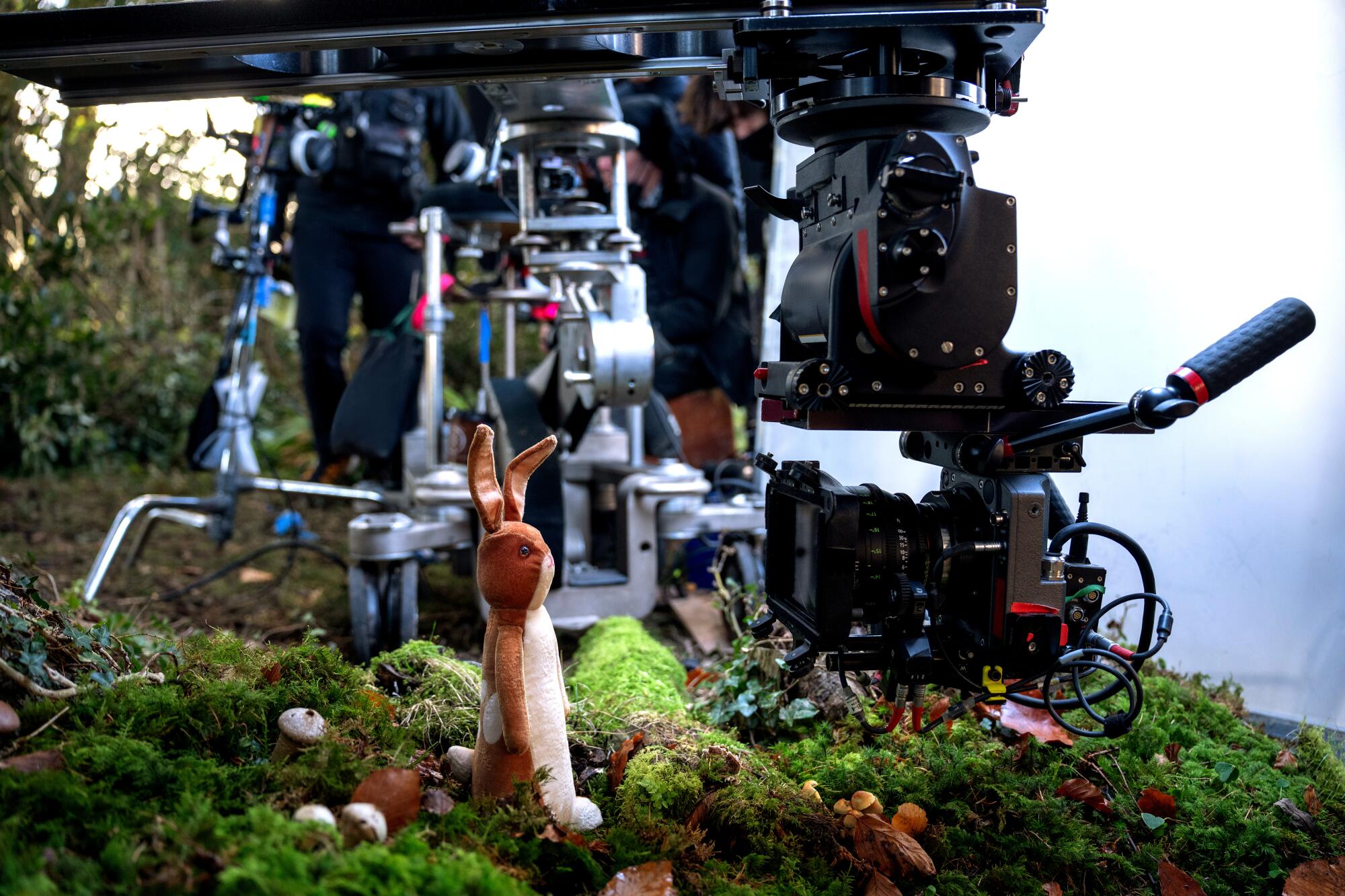
The live action portion of the story was filmed over three weeks in Ireland. But the special is also told in two-dimensional animation and three-dimensional computer graphics imagery. When William and the Rabbit go on their adventures together digging tunnels and escaping danger, it’s pure 2-D animation. When the Velveteen Rabbit is talking to the Wise Horse and the other toys in the playroom, the action is 3-D.
“I handed the script over with an apology,” Bidwell says with a laugh. He knew his first draft was asking a lot from the special’s production team. “Screenwriters like me put it down on the page and think, ‘Let’s see if we can do it,’ which is a real privilege and treat. You can reach that scale of ambition. We have the tools now.”
Casting Laroche as William was a critical point, because much of the story hinges on his performance. On the first day of filming, Pope called Apple and said, “We are going to be all right.” He recalls one of the crew members getting teary after watching Laroche perform in rehearsal. “He’s really a natural. I think he’s tremendous. Imagine having that much talent at that age,” Pope says.
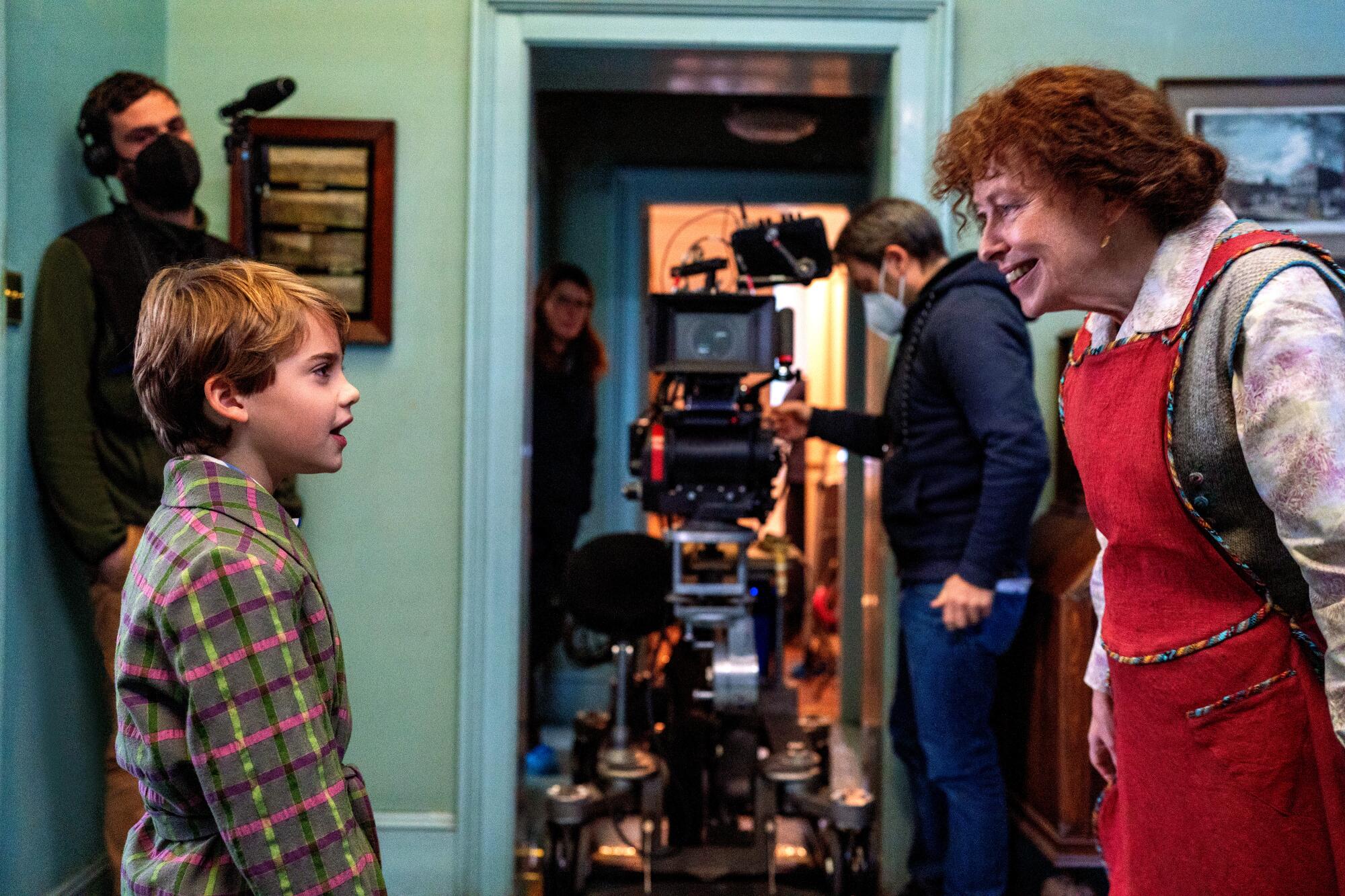
By the end of the special, which covers a year, from one Christmas Day to the next, William’s friendship with the Velveteen Rabbit gives him the confidence to forge new friendships and introduce himself to other children. “Every ending is just the beginning of something new,” the Velveteen Rabbit tells William.
“It is about how empowering love is,” Pope says. “They love each other and they can let each other go and they can go on to something different. That’s pretty great.”
It’s a phrase so fitting that it’s surprising to learn it’s not something uttered in the original story.
“I often start with what is the emotional truth of the piece,” Bidwell says. “Then the challenge is to make the book and the new ideas fit together. That is what we are always trying to do as writers. We want to disappear as screenwriters.”
Bidwell believes the book’s enduring popularity might be attributed to the bittersweet ending.
“People always remember that,” he says. “When there are moments in children’s books that are particularly sad, it lives longer in the memory. It stays with you more.”
Pope and Bidwell joke that the book’s central theme led the team to pondering questions like “What is the nature of reality?” and “What does it mean to be real?”
“We had endless conversations about metaphysics,” Sidwell laughs. But in the end they all agreed they wanted to tell the story in the best possible way and not “muck it up.”
“I think we want to make films where people feel better about the world at the end of it than at the beginning,” Pope says. “It’s a tricky world out there for kids and families.”
More to Read
The complete guide to home viewing
Get Screen Gab for everything about the TV shows and streaming movies everyone’s talking about.
You may occasionally receive promotional content from the Los Angeles Times.

